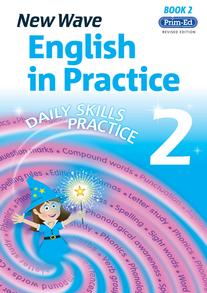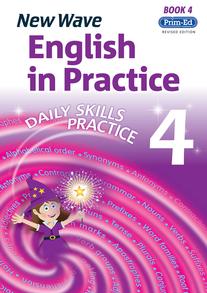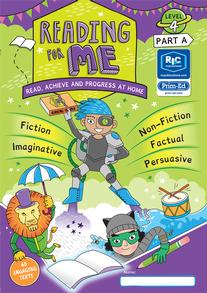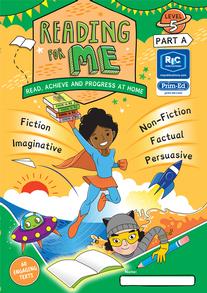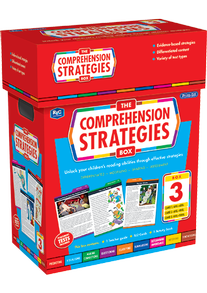-
0
Your cart is currently empty.
-
0
Your cart is currently empty.
-
Reading Comprehension Worksheets
Our reading comprehension worksheets can be used for Infants to 6th Class and cover topics on reading and writing skills, literacy, text structure and organisation, evaluation, interpretation, vocabulary building and more.
Prim-Ed’s comprehension resources are available in a variety of formats, to ensure you can find the best one for your class or teaching style. These include teacher notes, printable comprehension worksheets, photocopiable books, posters, word games, digital resources and eBooks.
Our reading comprehension resources are written to engage pupils of all abilities, with a range of interactive games, activities, visual illustrations and cloze to meet the needs of all pupils in a classroom.
What is comprehension?
Comprehension is the ability of the mind to understand, using logic and reasoning.
To read with comprehension, pupils must first learn to use a variety of strategies, progressing to the ability to apply them to different texts in order to develop the skills to use them successfully on their own.
Reading comprehension further develops reading skills by encouraging pupils to think about the meaning of the text, not just reading the words. When teaching, it is important that pupils understand the process first, before putting it into practice.
Reading comprehension also involves teaching pupils to think about thinking. Reading is more than just the mechanics of words on paper; it is important to understand what they mean. Teaching pupils how to find and process information in a meaningful way encourages them to use logic and reasoning to comprehend and make decisions about a text.
The Comprehension Strategies Box
The key comprehension strategies covered in The Comprehension Strategies Box series:
- Predicting: Pupils learn to make predictions on what is going to happen within the story based on prior knowledge and how to evaluate these predictions.
- Visualising: Pupils learn to create mental images of what they are reading, in order to better understand the text and improve recall.
- Questioning: Pupils learn the strategy of asking and answering comprehension questions about the text in order to draw out its meaning.
- Summarising: Pupils learn how to identify the main idea and summarise a text in order to understand it more clearly.
- Inferring: Pupils learn to evaluate conclusions by making inferences from the information presented in the text.
- Making connections: Pupils learn to draw on their own experiences and prior knowledge to make connections between the text and their own lives.
- Clarifying: Pupils learn how to recognise concepts and unknown words when reading a text and what to do to gain a better understanding.
- Determining importance: Pupils learn how to recognise what is important in the text and why that matters.
- Synthesising: Pupils learn to process information by reflecting on or retelling the stories in their own words, drawing their own conclusion on the meaning.
Reading Comprehension Worksheets
Comprehension worksheets are designed to suit each age and reading ability, with engaging content across fiction and non-fiction texts to help them understand the written word and comprehend at a deeper level.
Prim-Ed offers individual reading comprehension worksheets, printable worksheets, targeted series, box sets and teacher resources so there is something for everyone and every teaching style. Here are just a few of the resources available for your classroom:
- The Comprehension Strategies Box
- Primary Comprehension
- The Comprehension Box
- Reading Comprehension and Word Reading
- Teaching Comprehension Strategies
- The Literacy Box
- Comprehension Through Cloze
- Comprehension for Independent Readers
- Comprehension Lifters
- Comprehension for Independent Readers
Understanding how words work together can be challenging for children and these worksheets offer an engaging way to practise spelling, reading and comprehension and analytical skills to encourage pupils to become confident readers.
The Primary Comprehension series offers something special for every need: reading worksheets for pupils, teacher's notes, lesson plans, comprehension questions and answers and more! With titles to stimulate enthusiasm, such as A Visit from Planet Zog, A Scary Story and Ferocious Dragons, it is easy to find the perfect companion to engage both pupils and teachers in the classroom.
Teachers Guide to Reading Comprehension
To complement the range of comprehension resources, Prim-Ed recommends using the Teaching Comprehension Strategies teacher guide.
This series includes seven books designed to methodically and creatively teach pupils the skills required to comprehend fiction and non-fiction texts. The series covers Infant level to 6th Class, allowing the teacher to prepare pupils for the next stage of comprehension development.
The series is available as a photocopiable book (or download the eBook) for printable worksheets and includes reading comprehension worksheets, games, assessments and more.
Comprehension skills in the classroom
Once children are fluent readers, there are many opportunities to integrate reading comprehension throughout the curriculum. Prim-Ed’s approach uses modelling, active discussion, supported practice and feedback, before pupils begin to apply the strategies independently.
Teachers can use the Comprehension Strategies Box cards to help pupils learn how they should read a story or article and then apply that knowledge in their own reading.
To give pupils the best chance of success, it is important for teachers to find that balance between explicit instructions and giving pupils opportunities for independent practice.
Learning should be a positive experience, not just something you do because of necessity.
Fun, interactive activities designed for small groups will help pupils to better recall details and retain information because the experiences are enjoyable and memorable. They also provide an opportunity for constructive criticism from each other, encouraging independent thinking and critical analysis.
Prim-Ed’s comprehension resources will help unlock children’s reading abilities and teach them the strategies to develop reading comprehension skills.
Prim-Ed Publishing offers a range of English resources, including worksheets and teacher guides, plus much more. Reach out to us or download the catalogue to see the latest products for your school.
Frequently Asked Questions
Is comprehension part of the Irish primary curriculum?
Yes, learning how to read with comprehension is included under the Reading Learning Outcomes as outlined in the Primary Language Curriculum.
What is reading comprehension and why is it important?
Reading comprehension is the ability to read and understand text. It is important because it allows people to extract meaning from what they read, which is necessary for performing many everyday tasks, such as completing homework assignments, understanding instructions on a medication bottle, or reading articles online.
Additionally, strong reading comprehension skills are beneficial for success in school and in later life pursuits such as obtaining a university degree or landing a good job.
How to teach reading comprehension?
There is no one-size-fits-all answer to this question, as the best way to teach reading comprehension will vary depending on the pupil’s age, level of reading ability and personal learning style. However, some general tips that may help include:
- Breaking down a passage into smaller chunks and having the pupils read each chunk aloud.
- Asking probing questions about the text in order to encourage critical thinking and analysis.
- Have pupils summarise what they have read in their own words.
- Providing opportunities for practise through exercises such as cloze reading, inferential questions, crossword puzzles and word games.
- Whole-class discussions about the importance of books are a great way to foster children’s love for reading and lead to open discussion.
- For other children, using guided reading will allow teachers to differentiate their instruction for pupils in small groups or pairs based on individual abilities or knowledge.
When should children begin learning comprehension?
Children begin to learn comprehension skills from a very early age, as they begin to understand gestures and respond to the world around them. Prim-Ed’s resources are designed to introduce Junior and Senior Infants to comprehension and build on these skills up to 6th Class.
By nurturing their love of reading, children gradually begin to interact with and make meaning of texts. As they progress, their grasp of words, vocabulary and literacy and comprehension will develop and help them to become independent readers.
How can parents help with reading comprehension at home?
One of the best ways parents can help with reading comprehension is to read aloud to your child. This helps develop vocabulary and understanding, and it's a fun way for you to spend time together. You can also ask your child questions about what they've read to check their understanding.
Another helpful strategy is to have your child read aloud to you. This helps them practise their reading skills and makes sure they understand what they're reading. You can ask them questions about the passage afterwards to further assess their comprehension.
Finally, make sure your child has plenty of opportunities for practice. Give them books to read on their own, allow them to do homework that includes reading passages and have them read articles online or in magazines.
What topics are included in the reading comprehension worksheets?
Prim-Ed Publishing offers a variety of reading comprehension worksheets for pupils in Senior Infants to 6th Class. The worksheets help pupils improve their reading skills by practising reading, writing, literacy, vocabulary and critical thinking. The worksheets include engaging questions, activities and games, giving pupils the opportunity to evaluate and make connections between texts. The worksheets are available as photocopiable books and eBook PDF downloads on the Prim-Ed Publishing website.
What are the general strategies for reading comprehension?
There are nine strategies that can be used for reading comprehension. These are predicting, visualising, making connections, questioning, clarifying, summarising, determining importance, inferring and synthesising.

